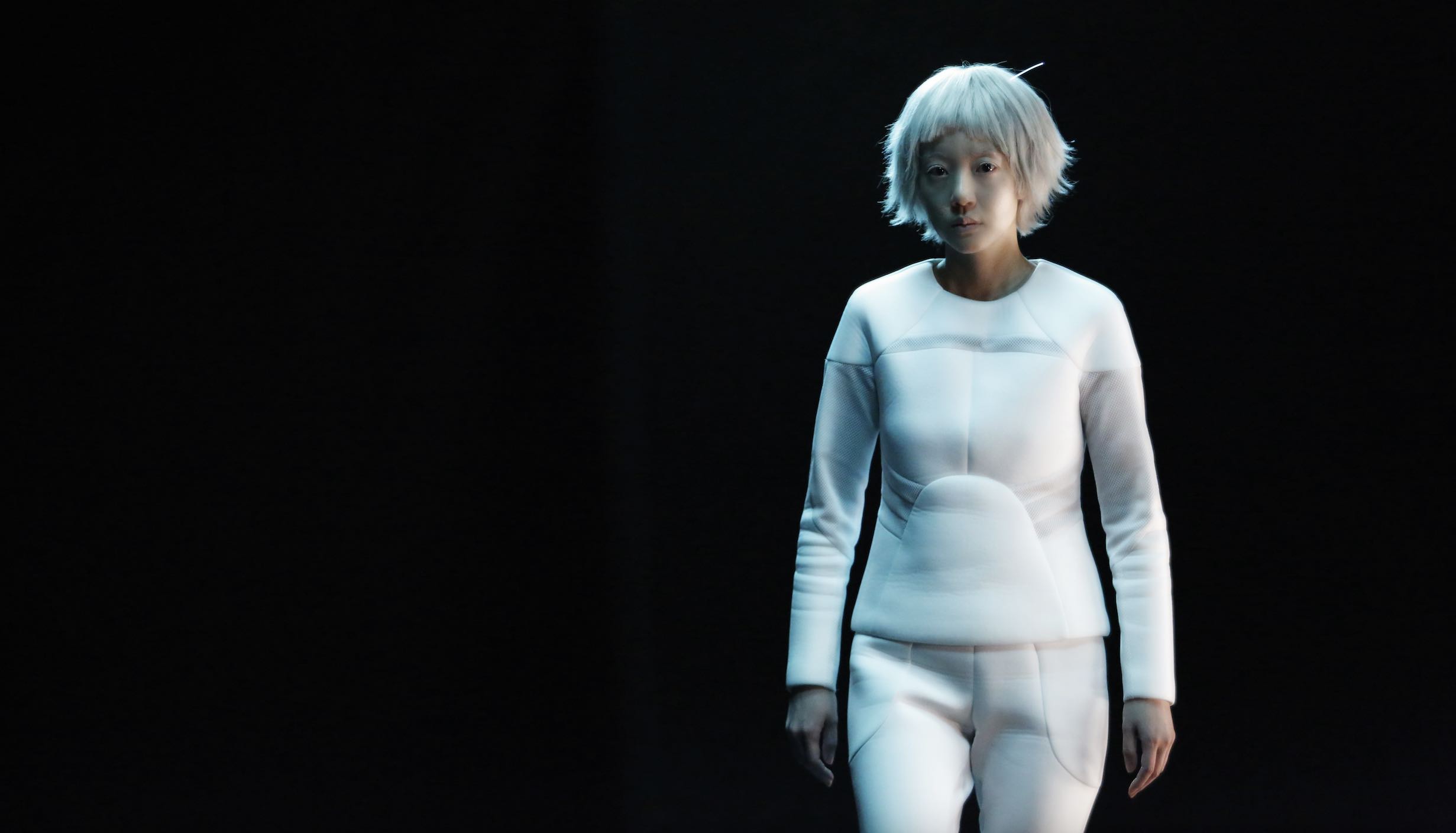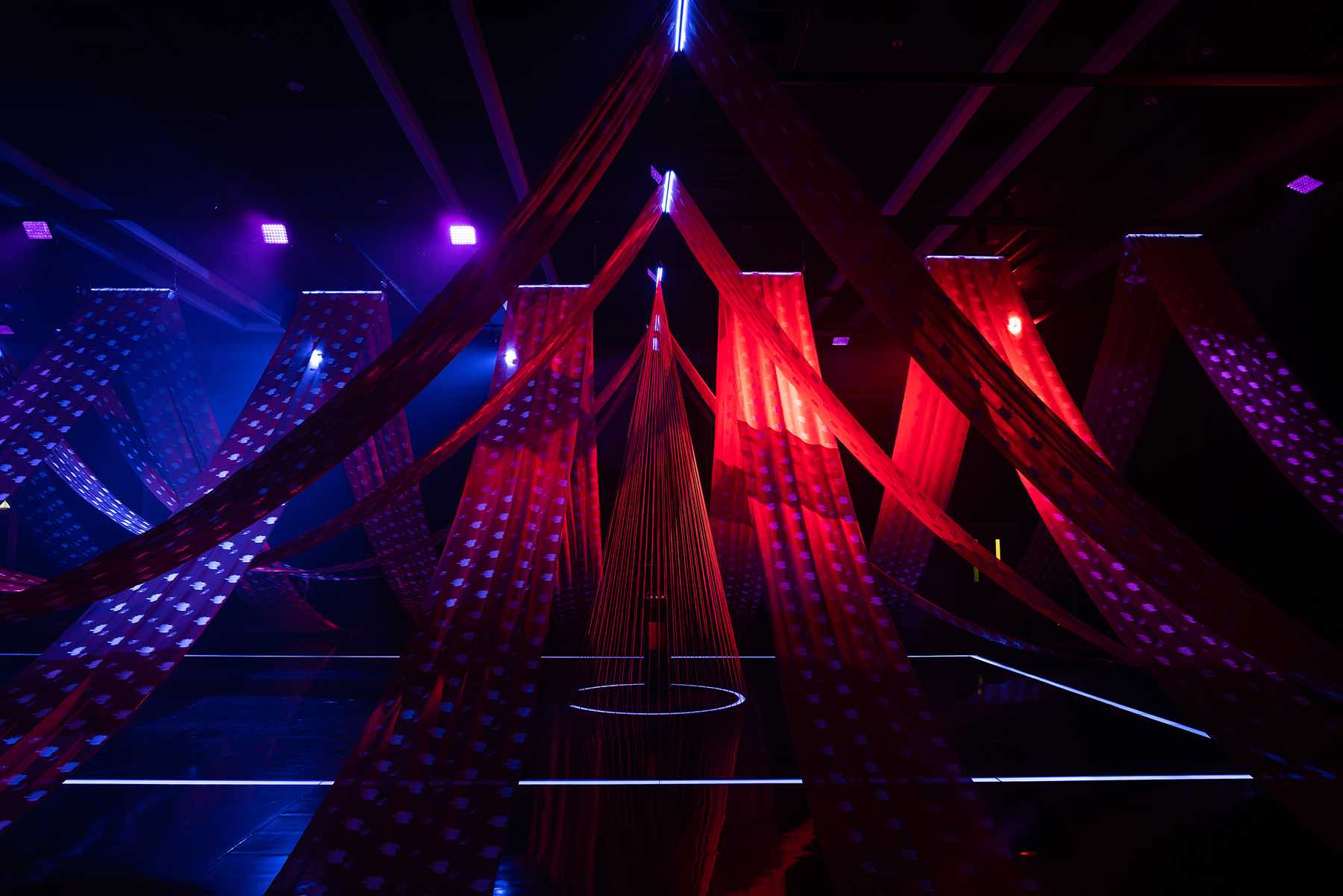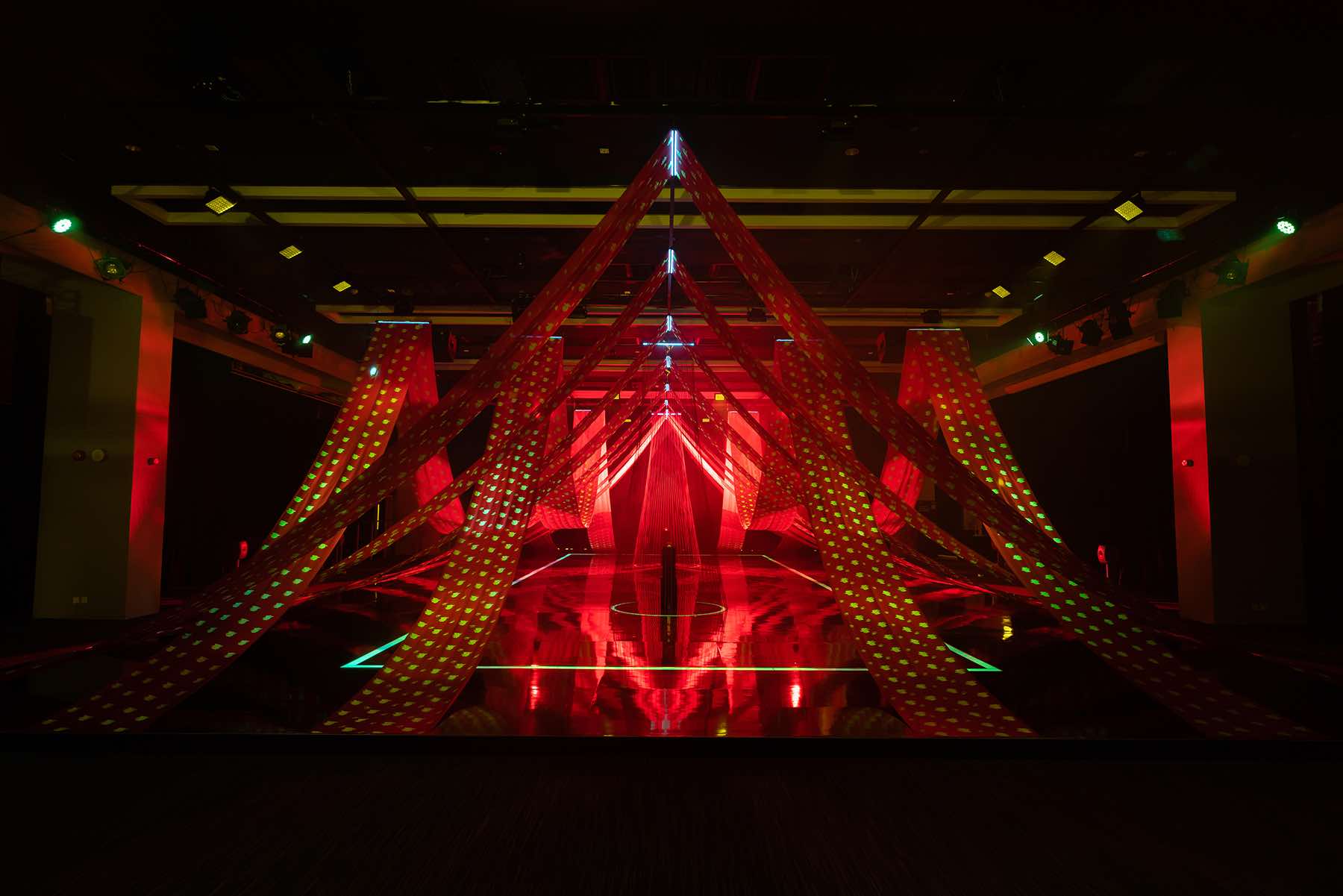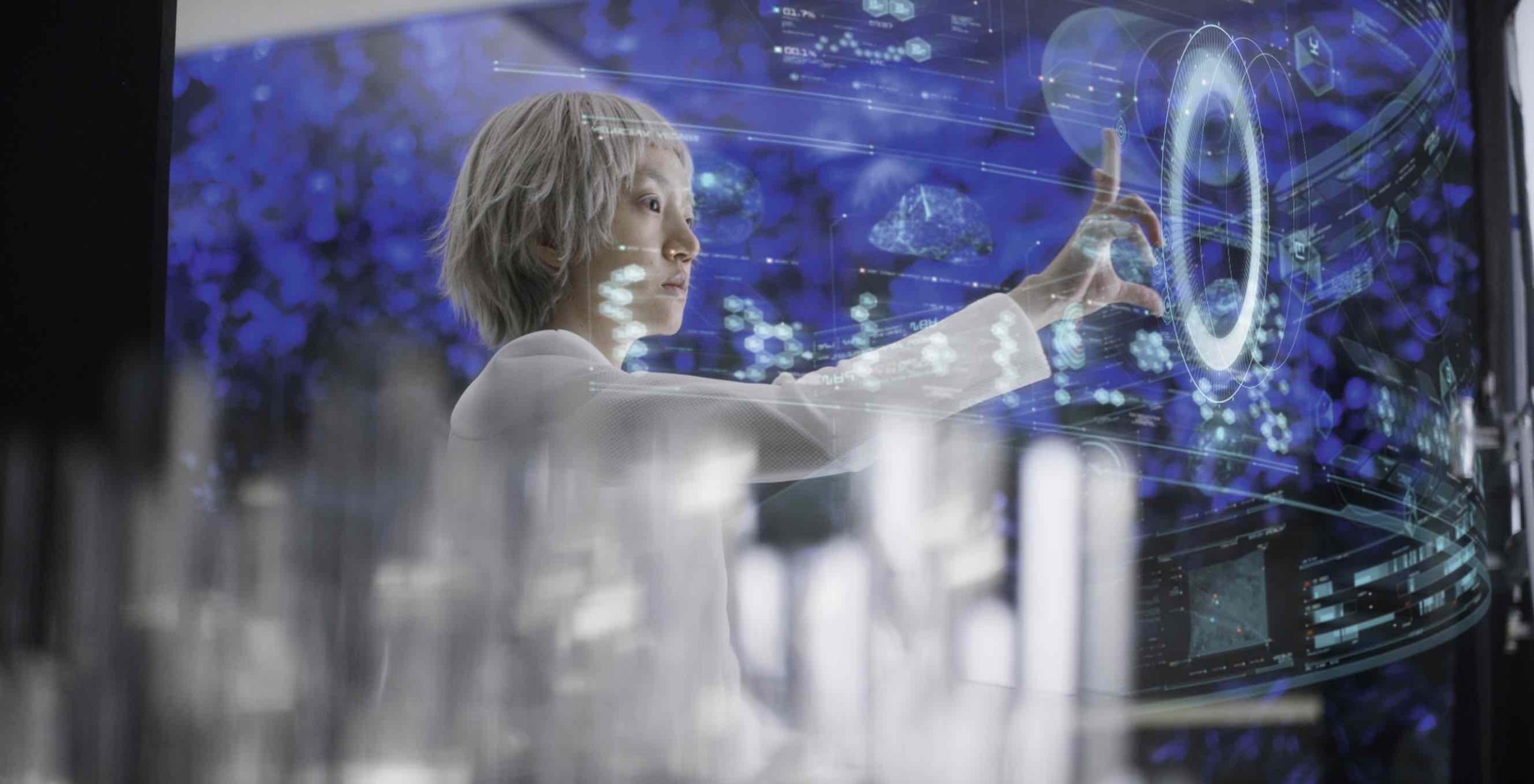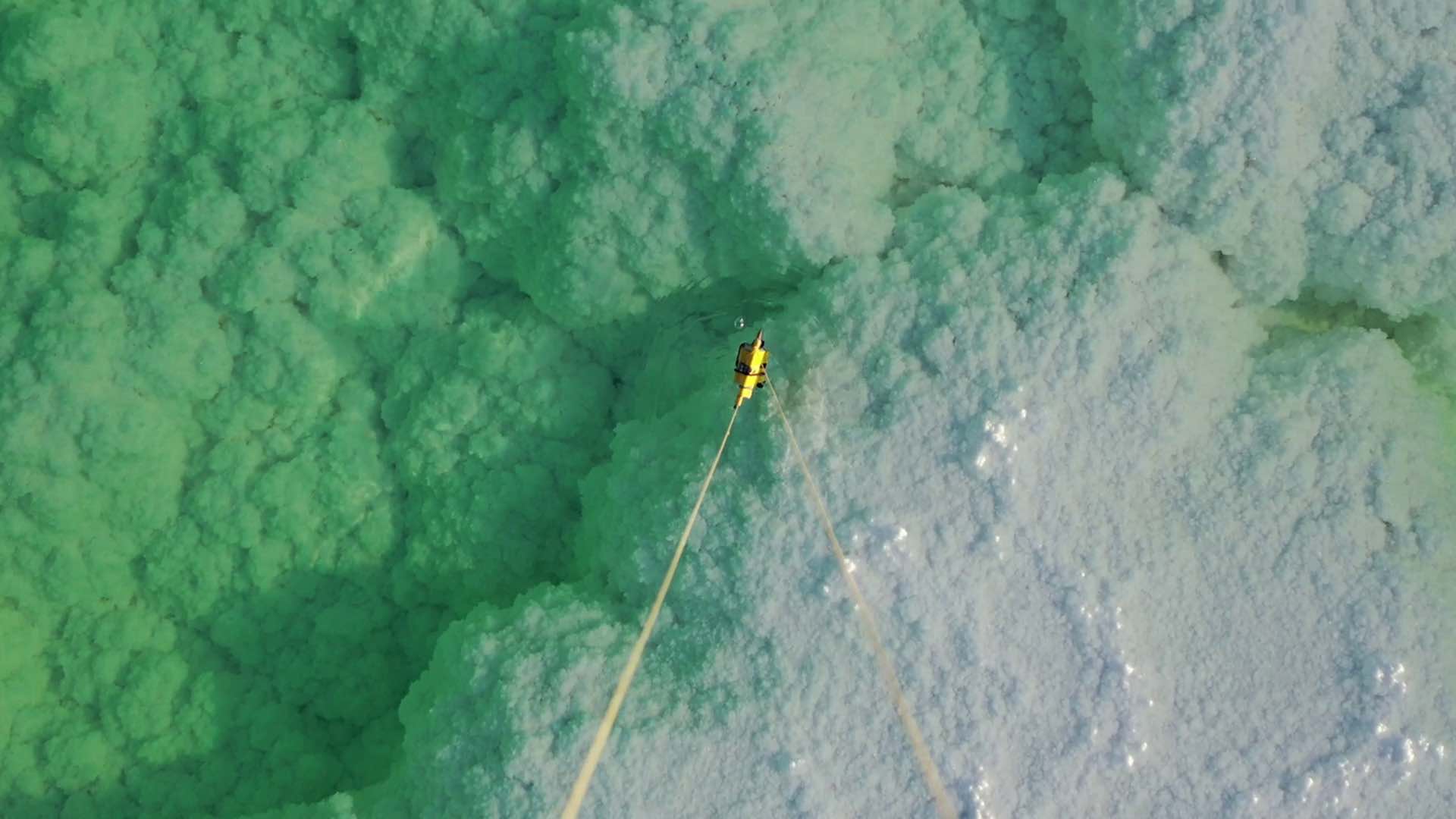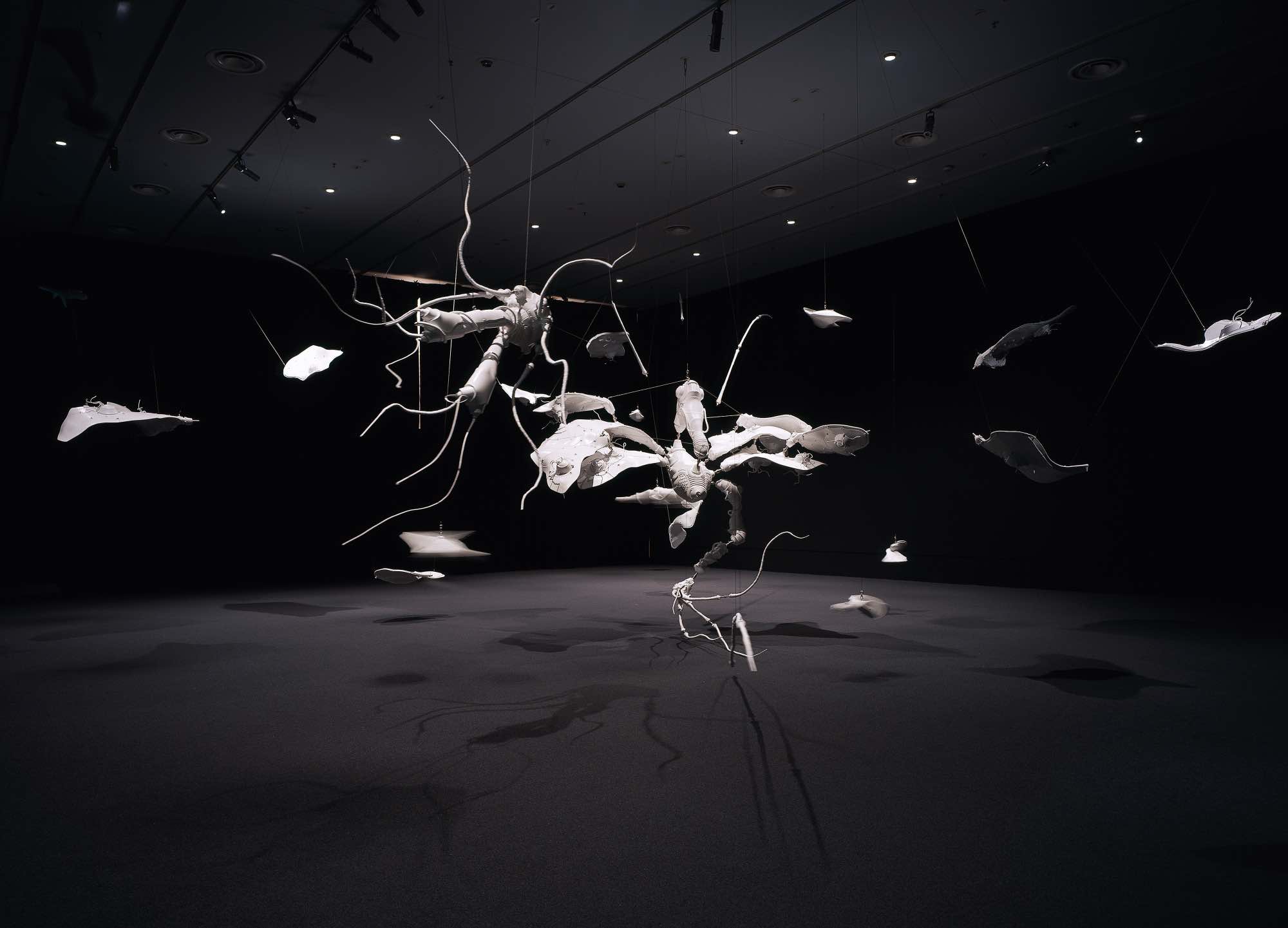ArtScience Museum is opening a portal to extraordinary new worlds from 21 October with its latest exhibition ArtScience Museum New Eden: Science Fiction Mythologies Transformed. Visitors will be able to uncover new perspectives on the genre of science fiction, encountering multiple futures and alternative realms inspired by Asia’s rich history and culture.
Over the years, the traditionally male-dominated and Western-centred genre of science fiction has evolved to give rise to more diverse voices. New Eden celebrates this by showcasing how women artists from Asia are addressing science fiction, dream worlds and fantastical realities in their work. This major new contemporary art exhibition curated by Gail Chin, Joel Chin, Adrian George and Honor Harger from ArtScience Museum, spotlights 24 Asian women artists and collectives, including some of the biggest names in contemporary art globally, such as Mariko Mori, Cao Fei, Patty Chang, Sputniko!, Lee Bul, Shilpa Gupta and Anicka Yi.
With close to 70 contemporary artworks, ancient artefacts, and Hollywood and Asian films, New Eden offers visitors a unique journey through time and space to uncover fascinating realms and strange lifeforms. It expands on Western science fiction paradigms such as parallel worlds and interstellar travel, while exploring Asian mythologies and philosophies including hybridity, mysticism, moving beyond humanity’s corporeal limitations, and the enduring fantasy of an other- worldly paradise.
“The contemporary art world has had a fascination with science fiction in recent times, with many shows on the topic being presented in museums around the world. But rarely is science fiction approached from the perspective of Asia and through the work of women. New Eden uses science fiction as a starting point to explore diverse worlds and inclusive futures envisaged by some of the most prominent artists working today. The exhibition makes connections between Asia and the West. Popular science fiction concepts such as parallel universes, interdimensional travel, and transcendence, are notions that are also deeply rooted in Asian philosophy and spirituality. New Eden draws lines between these discrete cultural traditions, suggesting that some science fiction tropes could have their origins in Asia,” said Honor Harger, Vice President of ArtScience Museum at Marina Bay Sands.
ArtScience Museum New Eden – Key Highlights of New Eden: Science Fiction Mythologies Transformed
New Eden unfolds across eight chapters – Paradox of Paradise, Words and Worlds, New Nature, Ways of Folding Space, Crafting New Worlds, The Monstrous Feminine, New Myths and In A New Light.
The full list of artists featured in the exhibition is: Morehshin Allahyari, Cao Fei, Patty Chang, Kara Chin, Chok Si Xuan, Club Ate, Debbie Ding, Fei Yi Ning, Shilpa Gupta, Etsuko Ichihara, Lee Bul, Liu Xiao Fang, Xin Liu, Mariko Mori, Moon and Jeon, Nguyen Trinh Thi, PACK, Anne Samat, Soe Yu Nwe, Sputniko!, Astria Suparak, The House of Natural Fiber, Saya Woolfalk and Anicka Yi.
Key exhibition highlights include:
Red Silk of Fate – The Shrine, 2023 by Sputniko! and Napp Studio & Architects
The Red Silk of Fate is an East Asian myth about invisible red threads that wrap around the fingers of those who are destined for each other. Award-winning Japanese artist, designer, and educator, Sputniko! reinvents this myth, creating red threads with silkworms genetically mutated to produce silk that contains oxytocin – a love hormone. The handwoven silk is presented in the form of an installation that emulates a Japanese Shinto shrine. A pair of special lenses can also be used to see the silk glow with embroidered patterns and colours which symbolise the Night- Blooming Cereus – a flower that opens briefly under moonlight. In addition to imagining a future where mythology may turn into reality through scientific intervention, the installation invites visitors to contemplate love and bonding in a spiritual setting.
Miko No Inori, 1996 by Mariko Mori
Miko No Inori – translated from the Japanese language as ‘Priestess’ Prayer’ – is an early work by internationally acclaimed multidisciplinary artist Mariko Mori that merges spirituality, the present and future. In this work, Mori adopts the persona of an ethereal priestess residing in Kansai International Airport – highly regarded at one time for its futuristic architecture. Performing a ritual that beckons the viewer to travel between worlds, lyrics such as “words are melting and becoming one” are sung. Through this depiction of a traditional priestess with futuristic-looking garments and physical attributes, Mori blends Eastern spirituality and Western technology.
Seoul-based Lee Bul has gained international recognition for her unconventional performances and sculptural installations. She continues to create thought-provoking works that cross genres and disciplines to explore themes of beauty, corruption, and decay. Drawing influence from the idealised female form in ancient Greek art as well as early Japanese manga, Lee Bul subverts notions of the perfect body in her artwork Untitled, regarding cyborgs as symbols of human imperfection. Central to this installation is a female body comprised of multiple parts, seemingly both organic and technological. Exploding outwards, fragments of familiar yet arguably grotesque forms, taken from the natural world, suggest that all belong to one entity.
The Ways of Folding Space and Flying, 2015 by Moon and Jeon
Korean artist duo Moon and Jeon have presented their work in numerous exhibitions including prestigious international cultural events such as Documenta and the Venice Biennale. Many of their works reflect on the human desire to go beyond current limitations. This work, titled The Ways of Folding Space and Flying – first presented at the Korean Pavilion at the Venice Biennale in 2015 – references ‘chukjibeop’ and ‘bihaengsul’ – Korean words that originate from ancient Taoist practices and loosely translate as: ‘fold space as a method of travelling vast distances’, and ‘to fly across time and space’. This video installation is set in a distant future in which much of the world has been covered in water. In it, the artists question the future relevancy of art and creativity.
Mountain (Shangri-La), 2023 by Patty Chang
Mountain (Shangri-La) is a dazzling, mirrored, three-dimensional artwork that can be rotated slowly like a prayer wheel to reflect light and emit ‘energy’ into the surrounding space. Created by
American-born Chinese artist Patty Chang, it represents a mythical Eastern paradise first described in James Hilton’s 1933 novel and portrayed in Frank Capra’s 1937 film, Lost Horizon. Curious about how it inspired the inhabitants of a rural farming town to rename their hometown ‘Shangri-la City’, Chang travelled to this ‘paradise-on-earth’ and created an accompanying 40- minute video that, alongside the installation, reflects on the entangled links between tourism economies, fantasies of utopia, and notions of exoticism.
White Stone, 2021 by Xin Liu, showing in Re-fabricated Realities
Another highlight of the exhibition is Re-fabricated Realities, a screening room in the galleries that showcases videos and films by artists from Asia, as selected by renowned Thai curator Gridthiya Gaweewong.
ArtScience Museum New Eden – Opening Programmes for the Public
As part of the opening weekend, there will be a slate of public programmes that allows visitors to dive deeper into science fiction worlds and engage further with the Asian women artists featured in the exhibition.
On 21 October, the exhibition’s opening symposium Radical Imaginations – New Eden, will feature artists Sputniko!, Irene Agrivina, Debbie Ding, and other speakers, who will explore speculative futures and new worlds informed by Asian mythologies.
Throughout the exhibition’s run from October 2023 to March 2024, ArtScience Cinema will also be presenting a curated film programme titled In Search of Tomorrow. Beginning on 16 October, it celebrates visions of the future with a lineup of kitsch b-movies, much-loved cult classics, and contemporary arthouse films that depict the utopian and dystopian fantasies of what life could be like, on Earth or elsewhere. Some highlights include the spellbinding Memoria by Thai artist- filmmaker Apichatpong Weerasethakul starring Tilda Swinton; Creature, a futuristic dance-film by acclaimed choreographer Akram Khan; Solaris, Andrei Tarkovsky’s seminal arthouse psychological space epic, and everyone’s favourite cartoon android Astro Boy (1980).
ArtScience Museum New Eden – Tickets and Reservations
Tickets are available for purchase at all Marina Bay Sands box offices and online. It is recommended that guests pre-purchase tickets online in advance due to limited capacity and timed entry of the exhibition.
For more information on New Eden: Science Fiction Mythologies Transformed please visit www.marinabaysands.com/museum/exhibitions/new-eden.html

